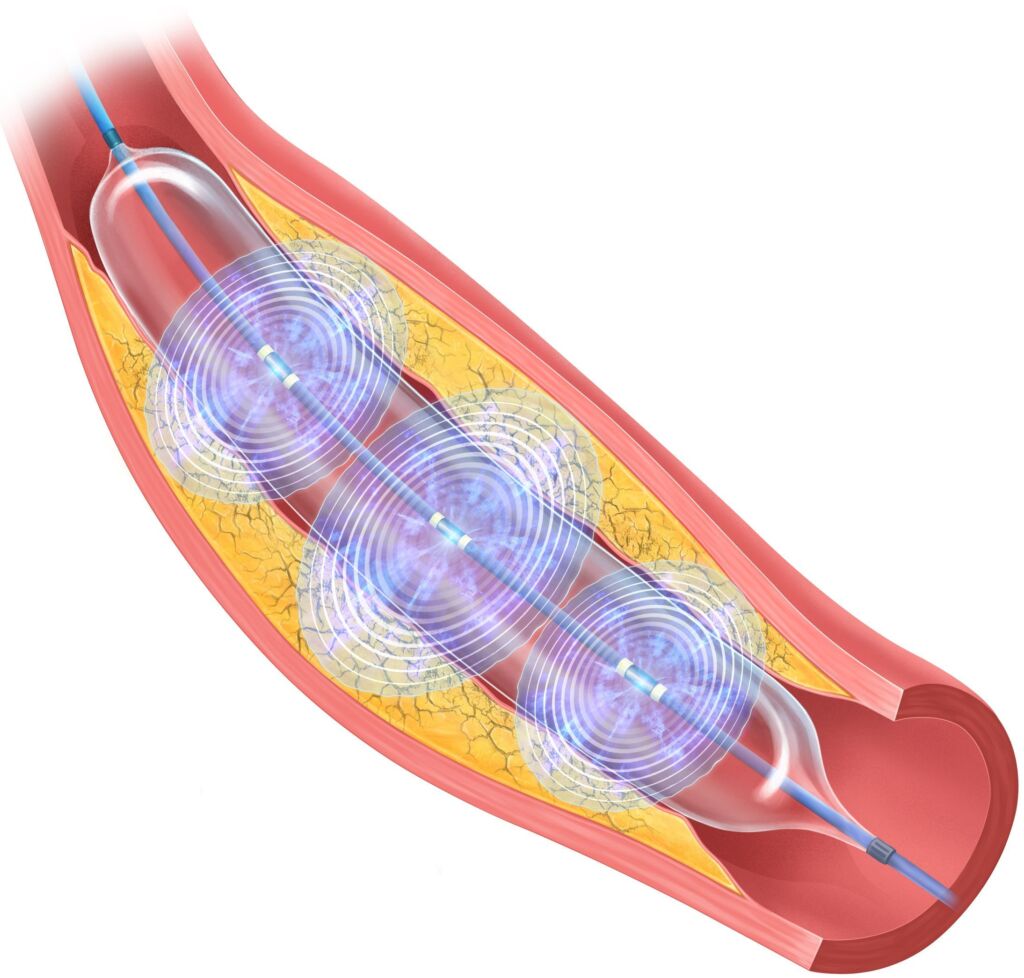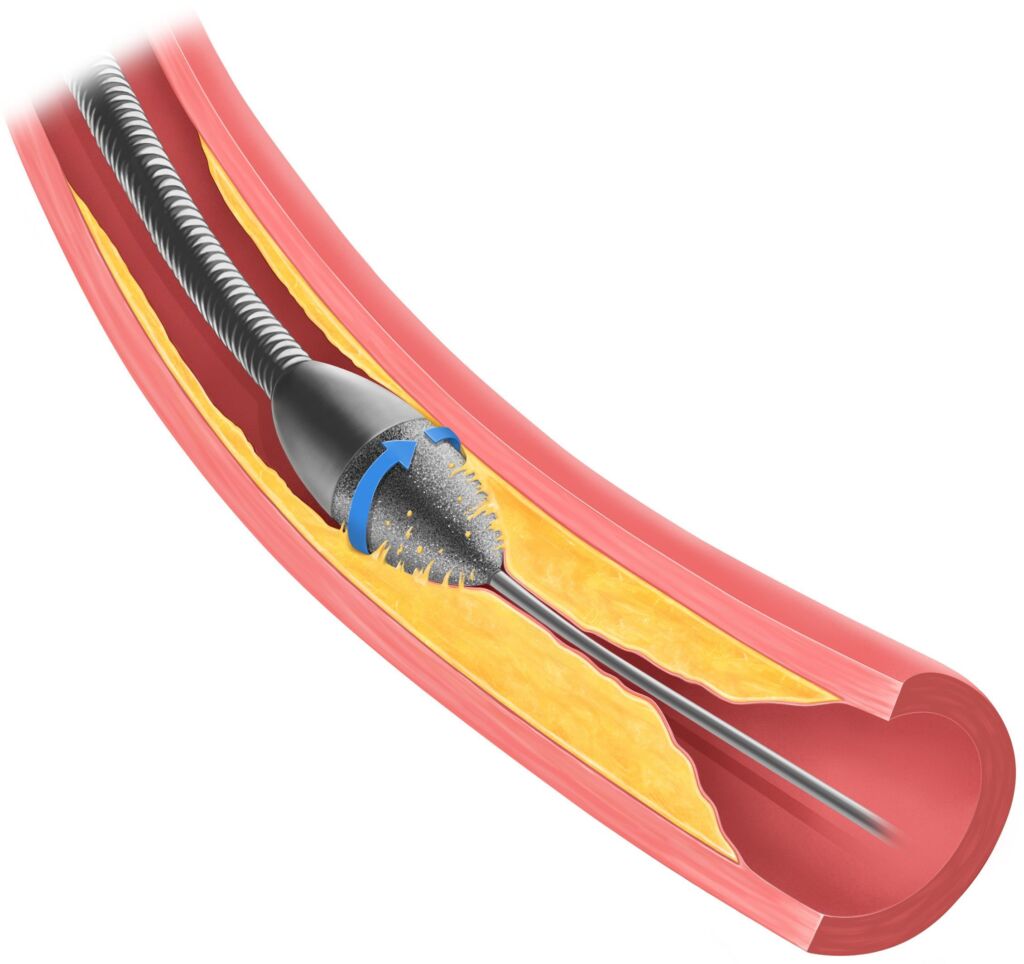In certain cases, pronounced calcifications of the coronary vessels cannot be dilated with a conventional balloon. In these situations, intravascular lithotripsy (IVL) and rotablation can be used. Targeted pre-treatment of the calcified vessel allows heavily calcified vessels to be optimally prepared for subsequent stent implantation, which significantly improves the long-term results.
- Intravascular lithotripsy (IVL): A special balloon is placed at the tip of the lithotripsy catheter. When the balloon is activated, shock waves are emitted in a controlled manner, similar to kidney stone fragmentation. These shock waves hit and shatter the calcium deposits in the vessels in a targeted manner. By breaking up the calcification, a heavily calcified vessel can be completely dilated and a stent implanted. With IVL, you also remain awake during the treatment, as the shock waves delivered do not cause any pain.

The figure illustrates the section of a coronary vessel with a narrowing, a so-called stenosis, which is caused by severe calcification (yellow). The vessel contains an inflated lithotripsy balloon. The blue flashes and waves represent the shock waves emitted by the balloon, which break up the calcifications.
- Rotablation: The calcification can be removed using a special catheter with a tiny diamond drill at its tip. Although the diamond bur can be surprisingly loud, the treatment is painless. Once the calcification has been removed, a balloon can be inserted and the percutaneous transluminal coronary angioplasty can be continued as usual.

The figure illustrates the section of a coronary vessel with a narrowing, a so-called stenosis, which is caused by severe calcification (yellow). Such constrictions can be treated with a special drilling catheter. The vessel contains a diamond drill which removes the lime. The blue arrow represents the fast rotation of the drill head.